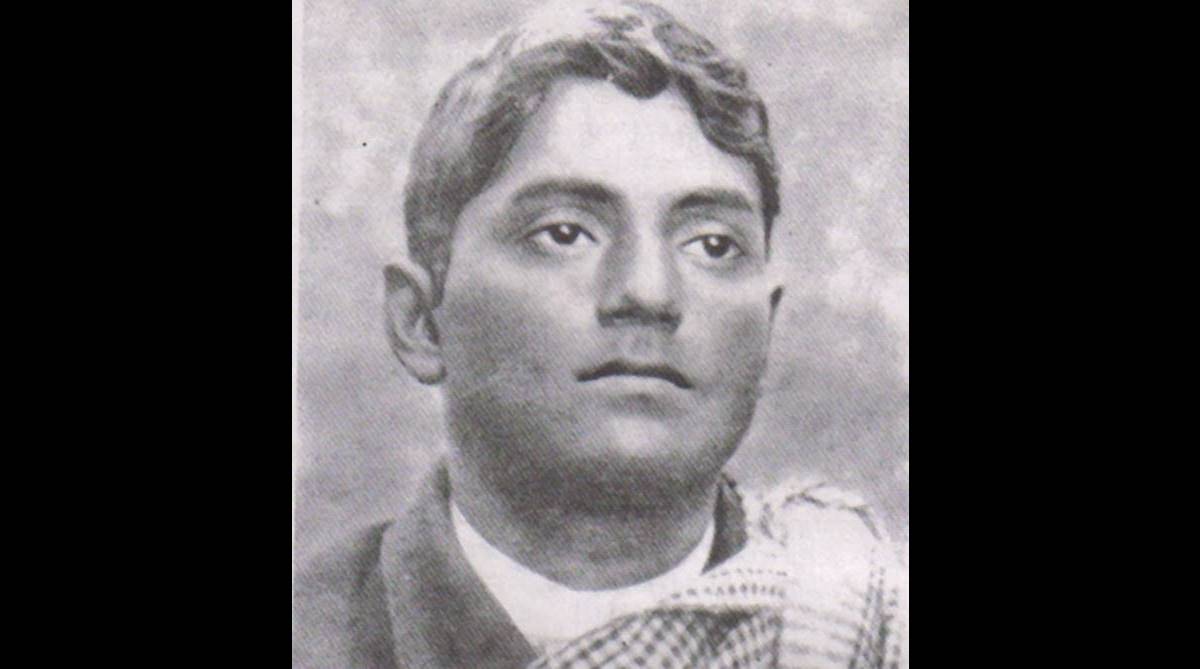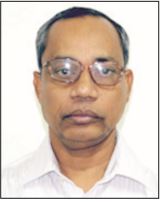Bagha Jatin tilted building: Engineer arrested from Haryana
In another major development, police have arrested the head of the engineering firm responsible for stabilising the dangerously tilting apartment complex in Bagha Jatin.
It is unfortunate that the supreme sacrifice made by Bagha Jatin and his associates is little known outside Bengal and Odisha, although there is no dearth of well-documented historical records. Long before Independence in 1947, there was an attempt under the leadership of Bagha Jatin and Narendranath Bhattacharya better known as MN Roy et al in 1915 — during World War-I — to attain Independence through armed insurrection in cooperation with Germany

Jyotindranath Mukherjee, popularly known as Bagha Jatin, attained martyrdom in a confrontation with the police during British rule. (Photo: Wikimedia Commons)

Success has many fathers and failure is like an orphan. This aphorism seems to be the irony of Jyotindranath Mukherjee, popularly known as Bagha Jatin, who attained martyrdom in a confrontation with the police, under the British, in an obscure village called Chasakhand in Balasore district of Odisha. He died on 10 September 1915. It is unfortunate that the supreme sacrifice made by Bagha Jatin and his associates is little known outside Bengal and Odisha, although there is no dearth of well-documented historical records. Long before Independence in 1947, there was an attempt under the leadership of Bagha Jatin, Narendranath Bhattacharya better known as M.N. Roy et al in 1915 ~ during World War I ~ to attain Independence through armed insurrection in cooperation with Germany. In fact, the incident can be considered as a precursor of the subsequent attempt by Subash Chandra Bose in 1945, under the aegis of the Indian National Army (INA) and during World War II with the support of Japan.
Born in 1879 in a village called Koya in Kushtia district of undivided Bengal, Bagha Jatin joined the Khudiram Bose Col lege in Calcutta in 1895 after completing his school education. His bravery, valour and daredevil spirit can be gauged from the fact that in 1904, he killed a tiger, which attacked one of his friends, with the help of a dagger after a three-hour struggle. The incident earned him the epithet Bagha (Tiger) Jatin.
Advertisement
He was profoundly influenced by the Bhagvad Gita and the writings of Bankim Chandra. He was also inspired by Sri Aurobindo’s Bhavani Mandir and Swami Vivekananda’s Present India. The clarion call of militant nationalism mesmerised the restless youth of the country particularly after the partition of Bengal in 1905. They were disillusioned with the slow and piecemeal pace of progress towards independence and were losing faith in the efficacy of constitutional movements in the form of protest and petitions. Jugantar was the organization that galvanised the spirit of strident nationalism and Bagha Jatin was its icon.
Advertisement
Around 1905, he organized an association called Chhatra Bhandar. Although established as Students’ Cooperative Stores Association, it was an outfit of revolutionaries of Bengal. He inspired and mobilised a large group of young revolutionaries.
M.N. Roy of Communist International fame came to know him in the later part of 1906 and accepted him as his leader. Both worked together.
By early 1914, there was considerable discontent against British rule and what added fuel to the fire was the promise of moral and material support to the revolutionaries in India from revolutionaries fighting for the cause of independence from abroad such as the Ghadr movement in Canada and the USA. It was against this backdrop that the outbreak of World War I in 1914 ignited militant nationalism in the country. The Indian revolutionaries in exile looked towards Germany as the land of hope. Lala Hardyal of the Hindustan Gadhre Party in America was also conducting similar activities there. The legendary Rash Behari Bose went to Japan. By the end of the year the news reached that Indian Revolutionary Committee in Berlin under the leadership of the redoubtable Birendranath Chatterjee had obtained from the German Government the promise of arms and money required to declare the war of independence. Clandestine conferences led to the formation of a revolutionary outfit, with Bagha Jatin as the Commander-in-Chief.
It was in this context that MN Roy left India in April 1915 and proceeded to Batavia (Jakarta) in Indonesia where he adopted the name, C.A. Martin. Bagha Jatin in the meanwhile anticipating the arrival of the arms and ammunition and in order to avoid being arrested after the Garden Reach dacoity, had left for Balasore, not very far from Calcutta, in the company of a few followers in April 1915. This was before MN Roy left for Batavia. There he and his loyal
followers sheltered themselves in a place called Kaptipada 22 miles from Balasore. Earlier at Balasore, Saileswar Bose, an associate of Jatin Mukherjee had set up in April 1915 an enterprise called the Universal Emporium which ostensibly dealt with the repair of bicycles and the sale of gramophones and records.
Unfortunately, however, the entire strategy envisaged for the armed rebellion got leaked and the British army intelligence intercepted the ship, which was on its way to India. After knowing the activities of Bagha Jatin and his associates the administration and the police cordoned off the hideout of Bagha Jatin so as to prevent his escape.
There was an exchange of firearms on 9 September at a place called Chasakhand in Balasore. One of the revolutionaries named Chittapriya Roy Choudhury died. Manoranjan Sen Gupta and Niren Das Gupta, two other associates of Jatin Mukherjee, were captured after their ammunitions were exhausted. Bagha Jatin was seriously wounded and was taken to the government hospital at Balasore for treatment, where he succumbed to his injury the next day ~ 10 September.
Although the armed uprising never materialised, it was deftly masterminded considering the prevalent world situation. No wonder, therefore, the rebel poet Kazi Nazrul Islam had described it as the ‘Haldighat of New India’, and had composed a beautiful poem in Bengali portraying the indomitable spirit of Bagha Jatin and his comrades who laid their lives at the altar of the freedom struggle. True, in the battle of Haldighat, Rana Pratap was militarily defeated but it ignited the flame of patriotism and nationalism. Much research needs to be done to unravel the mystery of the failure of the armed uprising and accord the rightful place to the martyrs of the uprising.
It is worthwhile to recall what MN Roy wrote about Bagha Jatin in this context ~ “The time has changed; the man who earned fame as a great conspira- tor against the Imperialist state and extraordinarily bold terrorist, is now to be memorialized as a great man in the history of modern India. His birthday is celebrated, and biographies written. But since his time, the polit- ical stage of India has been crowded with people claiming niches in history, if not places of honour in the pantheon of the greats. Judged by his actual feats, minus the legends woven around them, Jatinda’s name may be crowded out of the list of the national heroes”. Mentioning his heroic fight at Balasore, Roy wrote, “There is no doubt that the story of the Balasore jungle can be dramatized, and done by a master artist, it may attain the grandeur of an epic poem By way of expressing admiration and respect, the imperialist policeman who had the party to surround Jatinda’s hiding place, said, ‘He was the first Indian to die fighting, arm in hand’.
In fact, the great French philosopher Raymond Aron who supervised the thesis of Prithwindra Mukherjee, the grandson of Bagha Jatin on Sri Aurobindo at the Sorbonne University, is said to have observed that this story is meant not merely to establish the missing link in our official history, but also that in the person of Bagha Jatin he saw the ‘thinker in action’.
(The writer is Director, Research and Information Division, Lok Sabha Secretariat, New Delhi. He is currently writing a book on Bagha Jatin)
Advertisement